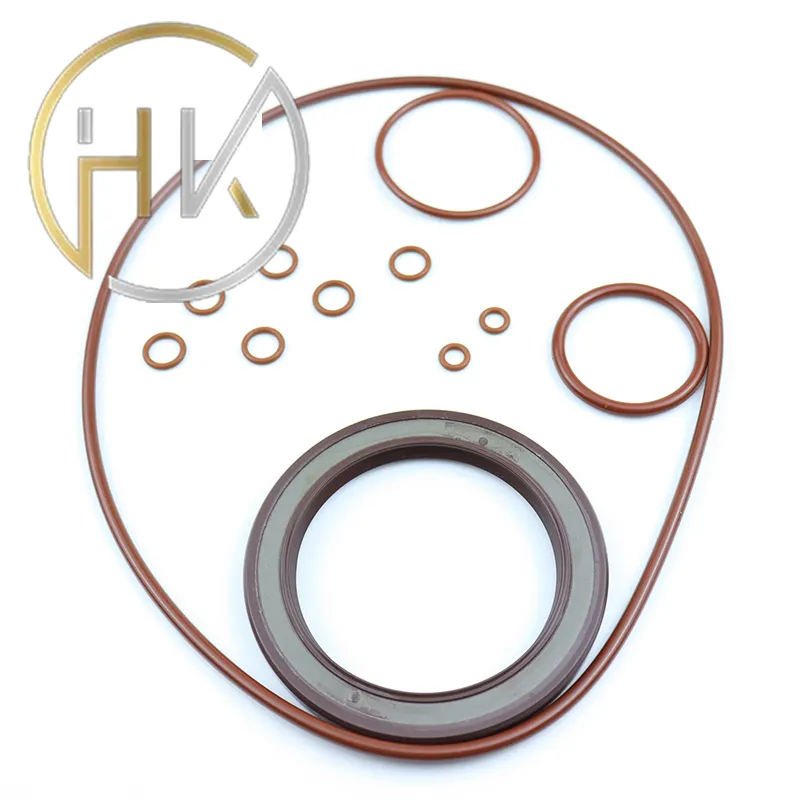Dec . 11, 2024 22:46 Back to list
dust seal vs oil seal
Dust Seals vs. Oil Seals Understanding the Differences and Applications
In mechanical engineering and manufacturing, seals play a crucial role in ensuring the longevity and optimal performance of various machinery and equipment. Among the myriad of seals available, dust seals and oil seals are two of the most commonly used types. Although they may seem similar at a glance, their functions and applications differ significantly. Understanding these differences can help in selecting the appropriate seal for specific applications, thereby enhancing operational efficiency and reducing maintenance costs.
What are Dust Seals?
Dust seals are protective barriers designed to prevent the ingress of dust, dirt, and other particulate matter into machinery. They are primarily used in applications where exposure to environmental contaminants is a concern. Dust seals are typically made from flexible materials such as rubber or polyurethane, which allow them to conform to the surfaces they are sealing against. Their design often features a lip or flange that fits snugly around the equipment, creating a tight seal.
One common application for dust seals is in automotive wheel bearings, where they prevent dirt and debris from entering the bearing assembly. This protection is vital, as contaminants can lead to premature wear and increased friction, resulting in mechanical failure. Dust seals are also used in heavy machinery, industrial equipment, and any system exposed to harsh environmental conditions.
What are Oil Seals?
Oil seals, also known as fluid seals or oil dynamic seals, serve a different primary purpose retaining lubricating oils and other fluids within a system while preventing leakage. They are typically designed to withstand higher pressures and temperatures compared to dust seals, as they deal directly with moving parts and the fluids necessary for their operation.
Oil seals are characterized by their specific design features, including a sealing lip that contacts a shaft or surface. This lip is designed to create a barrier that allows fluid retention while minimizing friction between the moving parts. Oil seals are commonly found in applications such as engines, gearboxes, and hydraulic systems, where maintaining lubrication is vital for ensuring the smooth operation of components.
dust seal vs oil seal

Key Differences
The main distinction between dust seals and oil seals lies in their primary function and design requirements. Dust seals focus on keeping contaminants out, while oil seals concentrate on retaining fluids. This difference in function leads to variations in material selection and design characteristics.
1. Material Composition Dust seals are often made from softer materials to ensure flexibility and adaptability to different surfaces. In contrast, oil seals are constructed from harder materials that can withstand high pressures and wear over time.
2. Design The design of dust seals often involves a simple lip or barrier, while oil seals may include additional features like garter springs to maintain contact with rotating shafts and prevent leakage effectively.
3. Application Scope Dust seals are most effective in environments prone to contamination from particles, whereas oil seals are specifically designed for systems where fluid retention is critical.
Conclusion
In summary, both dust seals and oil seals are essential components in various mechanical applications, each serving unique functions to enhance the longevity and reliability of machinery. Understanding the differences between these two types of seals is crucial for engineers and manufacturers when designing systems or selecting components for specific applications. By choosing the right seal for the right purpose, businesses can reduce maintenance costs and improve the performance of their equipment, ensuring they operate smoothly in their respective environments.
-
The Trans-formative Journey of Wheel Hub Oil Seals
NewsJun.06,2025
-
Graphene-Enhanced Oil Seals: Revolutionizing High-Pressure Oil Sealing
NewsJun.06,2025
-
Future of Hydraulic Sealing: Advanced Intelligent TCN Oil Seals
NewsJun.06,2025
-
Don’t Let a Broken TCV Oil Seal Ruin Your Day
NewsJun.06,2025
-
Bio-Inspired Dust Seals for Better Sealing Performance
NewsJun.06,2025
-
Biodegradable and Sustainable Hydraulic Seal Materials
NewsJun.06,2025
-
Top Oil Seal Solutions for Your Industrial Needs
NewsMay.22,2025
Products categories
















